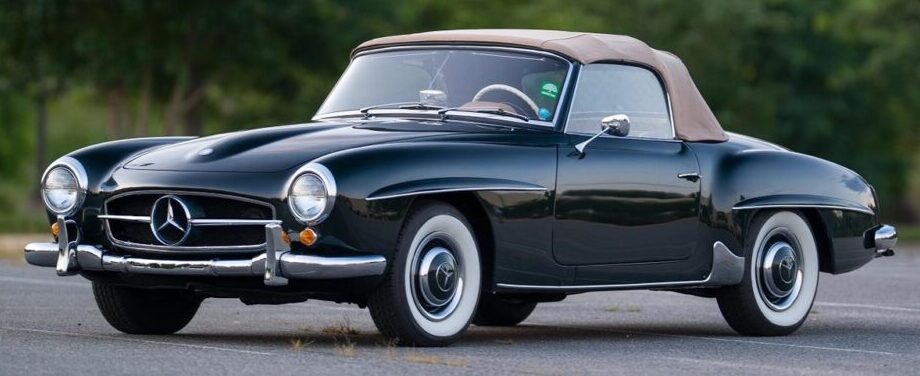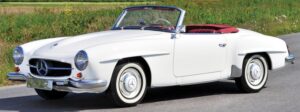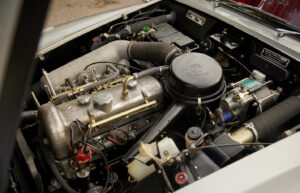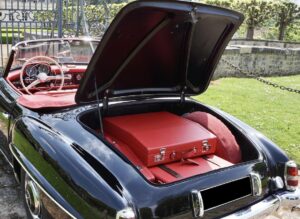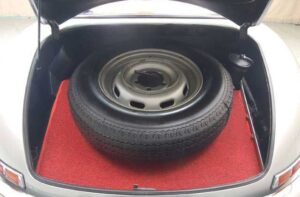The Mercedes 190SL: A stylish icon or a missed opportunity?
1. The legacy of Mercedes racing and the iconic 190SL
2. From Grand Prix to sports car legend
3. Enter the 190SL: A road car with sporting spirit
4. Design and engineering highlights
5. A stylish companion for everyday use
The legacy of Mercedes racing and the iconic 190SL
Mercedes-Benz made a triumphant return to Grand Prix racing in 1954 with the revolutionary W196. This 2.5-liter, normally aspirated car featured both streamlined and open-wheeled body styles. Making its debut at the French Grand Prix in Reims, the W196 dominated the racing world in 1954 and 1955, evoking memories of the legendary pre-war Silver Arrows.
From Grand Prix to sports car legend
During this era, racing regulations allowed manufacturers to adapt Grand Prix cars into sports racers. Mercedes-Benz capitalized on this by introducing the 300SLR for the 1955 World Sports Car Championship. The 300SLR (W196S) was directly based on the W196 Grand Prix car, with its engine capacity increased to 3.0 liters. The car’s streamlined design echoed the aerodynamic focus of its racing counterpart, making it a formidable force on fast circuits.
While the 300SLR achieved stunning success in races like the Mille Miglia, its involvement in a catastrophic accident at the 1955 Le Mans led to Mercedes-Benz withdrawing from competitive racing. This decision, influenced by internal concerns about the impact of motorsport on road car development, marked a poignant end to an era.
Enter the 190SL: A road car with sporting spirit
In May 1955, Mercedes-Benz launched the 190SL convertible, offering a more accessible alternative to the exclusive 300SL. While it shared the SL badge, the 190SL was a completely different car, designed for broader appeal. Built on a modified chassis from the Type 180 sedan, the 190SL prioritized practicality and affordability without sacrificing the elegance and performance associated with the Mercedes-Benz brand.
Design and engineering highlights
The 190SL was powered by a 1.9-liter inline-four engine, producing up to 105 horsepower in later models. Its design featured a pressed-steel floorpan and components borrowed from the Type 180, ensuring cost-efficient production. Early hardtops were made of aluminum but were later switched to pressed steel, improving durability. The car’s suspension was carefully engineered to provide a balance of comfort and handling, making it suitable for both everyday use and spirited driving.
A stylish companion for everyday use
One of the 190SL’s key advantages over the 300SL was its practicality. While the 300SL had minimal trunk space due to its large fuel tank, the 190SL offered a generously sized trunk and optional fitted luggage. Additional options included a third jump seat behind the front seats or a bench-style seat. These features made the 190SL an ideal companion for long-distance touring and everyday driving.
A Lasting Legacy
By the time production ended in February 1963, Mercedes-Benz had built 25,881 units of the 190SL. While it may not have matched the raw performance or glamour of the 300SL, the 190SL earned its place as a beloved sporting tourer. Its combination of style, practicality, and engineering excellence ensured its status as an enduring icon in the world of classic cars.
Are you already a proud owner of a Mercedes? If so, check out our selection of parts for this car at the following link:
Photos sources: laurentnay.com, Pinterest, jbclassiccars.com, Motorlegend, supercars.net






